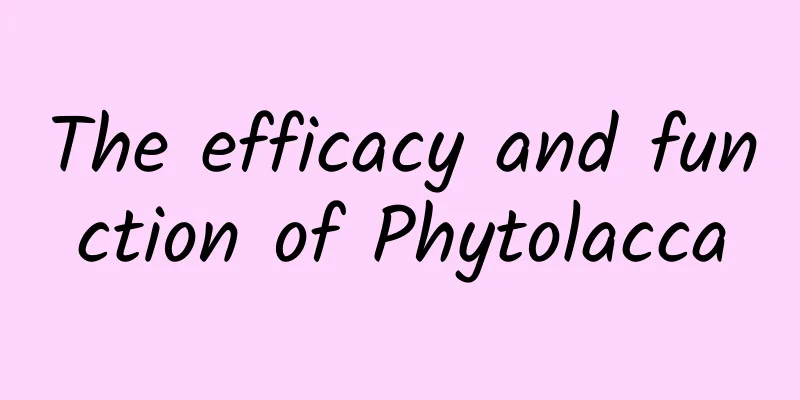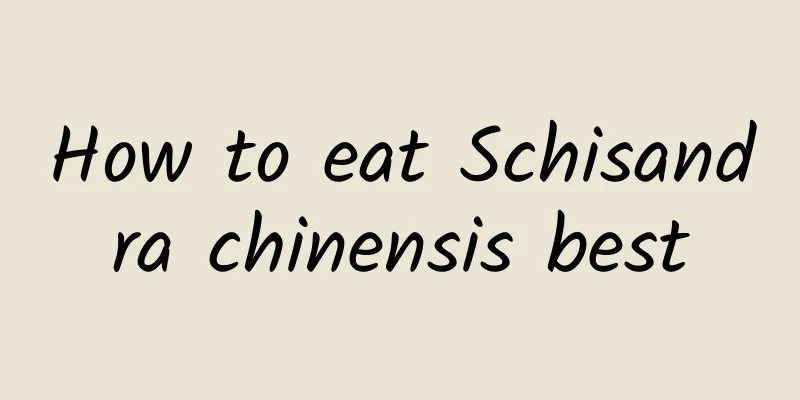Eating too much of this anti-thrombotic and blood vessel-benefiting drug can actually cause poisoning

|
Life is not just about living in a small house and making a living, there is also poetry and the distance! In this season you don’t have to travel far to experience the picturesque scenery, which even poets cannot write. This weekend, why not step out of your tiny home and take a look at the picturesque ginkgo trees on the roadside! Ginkgo is a deciduous tree of the Ginkgoaceae family and Ginkgo genus. It is also known as ginkgo, maidenhair tree, duck-foot tree, and cattail fan. The ginkgo tree is not only beautiful, but also full of treasures! 1. Ginkgo Fruit Ginkgo biloba, commonly known as white nut, is a nutritious high-end tonic. In addition to starch, protein, fat and carbohydrates, it also contains trace elements such as vitamin C, riboflavin, carotene, calcium, phosphorus, iron, potassium, magnesium, as well as ginkgolic acid, ginkgo phenol, pentose polysaccharides, liposterols and other ingredients; it can nourish yin, nourish the skin, anti-aging, dilate capillaries and promote blood circulation. [Discussion on Materia Medica] "Compendium of Materia Medica": "Cooked food warms the lungs and replenishes qi, calms asthma and cough, and stops leukorrhea; raw food reduces phlegm, disinfects and kills insects." [Nature, flavor and efficacy] Bitter, sweet, astringent, neutral; poisonous. It benefits the lungs and relieves cough, nourishes the kidneys and strengthens essence. [Main chemical components] The pulp contains ginkgolic acid, hydrogenated ginkgolic acid, ginkgolic acid chloride, ginkgolic acid diphenol and ginkgol, etc. The seeds contain a small amount of cyanogenic glycosides, etc. [Modern Research] Pharmacological studies have shown that it has expectorant and antihypertensive effects, and has varying degrees of inhibitory effects on Staphylococcus, Streptococcus, Corynebacterium diphtheriae, Bacillus anthracis and Escherichia coli. It also has anti-allergic, anti-aging and uterine contraction effects. It is used in modern clinical practice to treat asthma, chronic cough, spermatorrhea, impotence, tuberculosis cough and leucorrhea. Ginkgo can be eaten in a variety of ways. It can be stir-fried, stewed, or eaten with other foods, such as ginkgo stewed with black-bone chicken, ginkgo braised pork, ginkgo stewed with pig's feet, candied ginkgo, etc. Eating ginkgo nuts regularly can resist aging, protect the liver, prevent and treat cardiovascular diseases, enhance memory, and prevent and treat Alzheimer's disease. Recommend two delicious ginkgo: 1. Whitening almond soup Ingredients preparation: appropriate amount of chicken essence, a little oil, salt, cooking wine, onion, ginger, chicken legs, 100 grams of fungus, and 60 grams of ginkgo. Method steps: Wash the chicken legs, chop them into pieces, add salt and cooking wine and marinate for 15 minutes; Put the ginkgo nuts into boiling water and cook until done, remove the shells and skins, soak the black fungus and wash it; Heat oil in a pan, add shredded ginger and chicken and stir-fry. When the chicken changes color, add water and cooking wine. Bring to a boil over high heat, then simmer over low heat for 50 minutes, add black fungus and ginkgo nuts, and cook for 8 minutes; Add a little salt, chicken essence and chopped green onion and serve. 2. Lily and Ginkgo Porridge Ingredients preparation: rock sugar, appropriate amount of lily, 60 grams of glutinous rice, and 60 grams of ginkgo. Method steps Wash the glutinous rice and soak it for half an hour. Boil the ginkgo nuts, remove the shells and skins and set aside. Put water in the casserole, put in glutinous rice, add a little oil, and boil over high heat; Then simmer for 25 minutes, add the lily and simmer for 10 minutes; Then add the ginkgo nuts and cook on low heat for 5 minutes. Add rock sugar and cook for 1 minute. Ginkgo nuts also have risks. Ginkgo seeds contain chemical substances such as ginkgolic acid and cyanide. Excessive intake of these substances can endanger our health and may even cause loss of life. There have been a large number of poisoning cases in the famous ginkgo hometown. Ten raw ginkgo nuts can be fatal to infants under one year old. Children aged 3 to 7 will suffer from poisoning if they consume 30 to 40 raw ginkgo nuts, and it can be fatal to some people. As for adults, if they consume more than 50 pills in a short period of time, they will be poisoned. Ginkgo acid and cyanide are destroyed by heating. It is safer to eat heated ginkgo nuts as much as possible. Also control your food intake. 2. Ginkgo Leaves Ginkgo leaf is the leaf of Ginkgo biloba, a plant of the Ginkgoaceae family, also known as ginkgo leaf. Ginkgo biloba is a plant with high medicinal value. [Compendium of Materia Medica] "National Compendium of Chinese Herbal Medicines": "Promote blood circulation and relieve pain." [Nature, flavor and efficacy] Bitter, sweet, astringent, neutral; poisonous. It benefits the lungs and relieves cough, nourishes the kidneys and strengthens essence. [Main chemical components] The leaves contain flavonoids such as kaempferol, luteolin, quercetin, syringin, etc., as well as bilobalide A, B, C and ginkgolide. [Modern Research] Pharmacological studies have shown that it can increase cerebral blood flow, improve brain cell metabolism, improve learning and memory, protect nerve cells, resist aging, dementia and brain dysfunction, scavenge free radicals, and resist lipid peroxidation. It is used in modern clinical practice to treat coronary heart disease, hyperlipidemia, cerebral arteriosclerosis, vertigo, poor memory and epilepsy. Modern scientific research has proved that ginkgo leaves contain more than 200 useful ingredients, integrating nutritional and health functions. [Toxic side effects] Ginkgo leaf is a plant that contains toxic ingredients. If used correctly, it is good for the body. If not used correctly, it can be harmful to the body. Ginkgo leaves can easily cause paroxysmal convulsions, nerve paralysis, pupil dilation, allergies and other side effects when used to make tea. Pregnant women, children and the elderly should not use ginkgo leaves to make tea, because ginkgo leaves contain a large amount of ginkgolic acid. Taking too much or taking it for too long can cause certain damage to the heart and can easily cause heart disease. Therefore, ginkgo leaves should not be consumed casually. Note: Ginkgo leaves sold on the roadside cannot be used as medicine or directly to make tea. Citizens please take note! |
<<: Meeting it is the most beautiful accident for diabetics
>>: Green "King of Health" specializes in curing "immortal cancer"
Recommend
What is the difference between three-dimensional space and four-dimensional space? How to understand it? Does higher-dimensional space really exist?
This question is actually very simple. Three-dime...
This smelly thing can actually cure many diseases
Ginkgo trees grow white fruits, which are ginkgo ...
What diseases can He Shou Wu cure?
Polygonum multiflorum has been recorded in medica...
Can I eat eggs while taking Chinese medicine when I am sick?
Eggs are rich in protein and are generally not su...
Young people, if you find that your blood pressure is high, you have to control yourself
"As I get older, I have to avoid all kinds o...
Asia Winter Science Popularization Issue 10丨Technology "Quick Heat", Start Winter Warming with One Click
Keywords: Long cotton coat, 2 seconds to heat up ...
Can honeysuckle remove moisture?
Everyone knows that honeysuckle has many function...
The efficacy and function of the root of Uncaria rhynchophylla
The root of Uncaria rhynchophylla is a common Chi...
YouGov: Nearly 70% of Americans plan to shop during the holidays
Holiday shopping may look different this year. Fo...
Astronauts also need to be quarantined? What's the logic behind this?
(Copyrighted image from the gallery, no permissio...
The efficacy and function of white mustard
With the development of society and the close int...
Doctors remind: If your child has a high fever convulsion, don’t do these 7 things!
In the past two weeks, influenza A virus infectio...
The difference between mugwort and wormwood
In our daily life, there are many plants that loo...
The efficacy and function of Ganxi Rat Tail
After thousands of years of sedimentation and acc...









